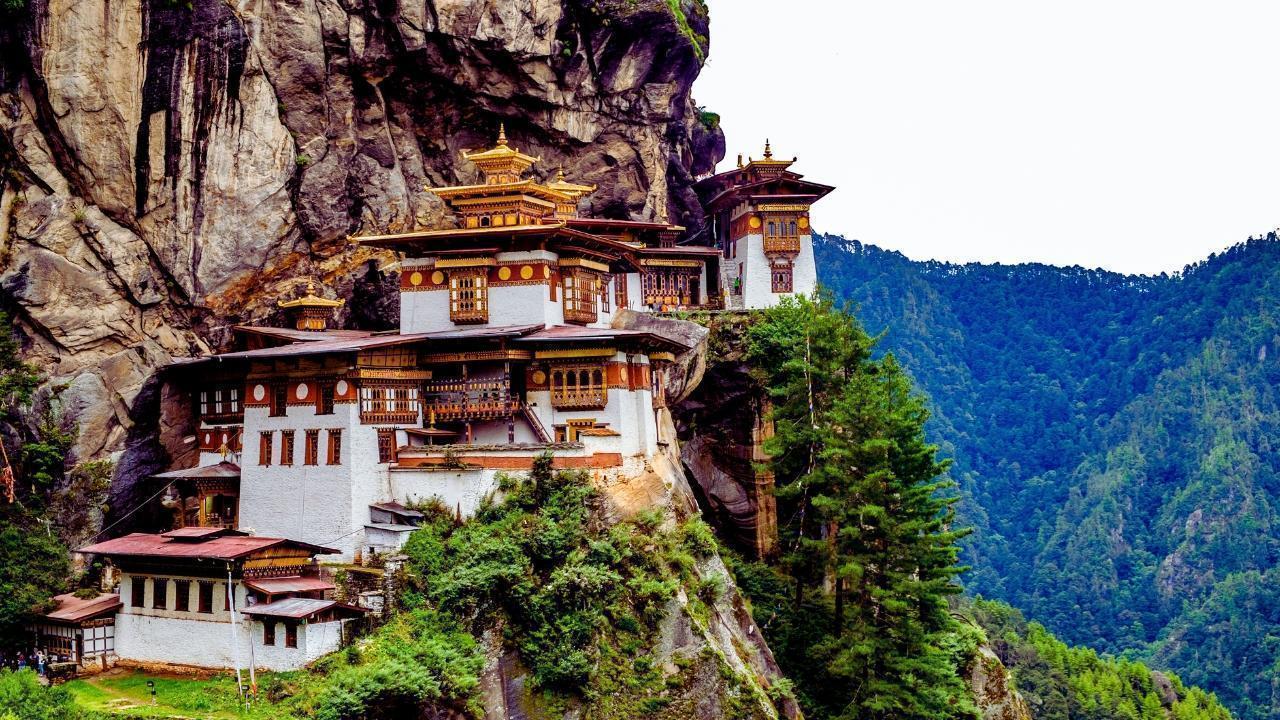
Join 10k+ people to get notified about new posts, news and tips.
Do not worry we don't spam!

Post by : Anis Farhan
Asia is a continent brimming with ancient cultures, priceless historical sites, and traditions that go back thousands of years. From the grand temples of Angkor Wat in Cambodia to the intricate manuscripts of Nepal, and the ancient Silk Road artifacts stretching across Central Asia, this heritage tells the story of human civilization. However, these treasures face many threats: natural disasters, the passage of time, human conflict, and even the wear and tear from millions of visitors. How do we keep these invaluable pieces of the past safe for the future? Increasingly, the answer lies in technology. In the digital age, Asian nations are using cutting-edge tools to protect, preserve, and share their ancient treasures in ways never before possible.
For centuries, preserving heritage meant carefully restoring physical objects, building protective structures, or archiving documents in climate-controlled rooms. While these traditional methods are still vital, they have limits. Physical objects can decay, be damaged, or be lost forever. Digital technology offers a powerful new layer of protection. By creating perfect digital copies, we can safeguard information even if the original is harmed. More than that, digital tools allow us to share these treasures with a global audience, breaking down geographical barriers and making history accessible to anyone with an internet connection.
This blend of old and new – respecting ancient traditions while embracing modern innovation – is a hallmark of how Asia is approaching heritage preservation. Countries across the continent are investing in a range of technologies, from complex 3D scanning that captures every tiny detail of a sculpture, to virtual reality experiences that allow you to "walk through" ancient temples that might otherwise be off-limits. It's about ensuring that the rich stories and profound beauty of Asia's past continue to inspire and educate people for generations to come.
One of the most transformative technologies for preserving physical heritage is 3D scanning. Imagine creating a perfect digital twin of an ancient statue, an old building, or even a fragile artifact. That's what 3D scanning, often combined with photogrammetry (using many photos to create 3D models), allows us to do. Highly accurate laser scanners and specialized cameras capture every curve, texture, and detail of an object, creating a precise digital model.
In places like Japan, after the devastating fire at Shurijo Castle in Okinawa, researchers used 3D modeling technology to virtually reconstruct the castle's shapes and textures. This wasn't just for show; it's a vital tool for planning future physical reconstruction and for educating people about what was lost. Similarly, along the historic Silk Roads, many archaeological sites are remote and fragile. Digital technologies are being used to create 3D models of entire cave sites, like the Mogao Grottoes in China, allowing researchers to study them in detail without causing any physical damage. Some of these digital models are even made available to the public online, letting anyone virtually browse through the cave sites and zoom in on ancient mural paintings.
These digital models serve multiple purposes. First, they are an accurate backup in case the original is ever damaged or destroyed. Second, they allow detailed study and analysis by experts worldwide, even those who cannot physically visit the site. Third, they open up incredible possibilities for public engagement. Imagine exploring the Forbidden City in China or an ancient temple in India through a virtual reality headset, getting up close to details you might never see in person. This technology transforms how we interact with history, making it more immersive and accessible.
Beyond static 3D models, Virtual Reality (VR) and Augmented Reality (AR) are taking heritage preservation and presentation to a new level, allowing people to "step into" historical sites or see ancient artifacts come alive.
Virtual reality creates fully immersive digital environments. In China, for example, the "VR-Heritage" database, developed by Peking University, records hundreds of cultural heritage sites. Users can put on a VR headset and virtually "walk through" these sites, exploring ancient architecture and even standing on beams that would be too dangerous to access in the real world. This not only makes learning incredibly engaging but also protects the physical sites from wear and tear caused by too many visitors. It's a risk-free way to experience history.
Augmented reality overlays digital information onto the real world, often through a smartphone or tablet screen. In Hong Kong, the "City in Time" project uses AR to let smartphone users see panoramic views of how certain parts of the city used to look in the past. By scanning markers at specific locations, you can hold up your phone and see historical buildings or scenes appear on your screen, blended with the current view. This instantly connects the past with the present, offering a powerful educational experience. Similarly, museums across Asia are using AR apps to provide interactive tours, allowing visitors to point their phone at an artifact and see animated explanations or historical context pop up. These technologies make heritage feel more immediate and relevant, especially to younger, digitally-native generations.
Cultural heritage isn't just about old buildings and artifacts; it also includes intangible heritage – things like traditional music, dances, storytelling, languages, rituals, and craftsmanship. These living traditions are often passed down orally or through practice, making them incredibly fragile and vulnerable to being lost over time. Digital technology is now playing a crucial role in preserving these priceless aspects of Asia's cultural identity.
Using high-quality audio and video recordings, traditional performances, ceremonies, and oral histories are being meticulously documented. Projects across India, Southeast Asia, and beyond are recording endangered languages, traditional songs, and the unique skills of master artisans. These digital archives ensure that even if a tradition fades in practice, its essence is preserved for future generations to learn from and revive. For example, some initiatives are using technology to transcribe and analyze oral histories, making these invaluable narratives more accessible to researchers and the public.
Furthermore, AI and machine learning are helping to classify and categorize vast amounts of digital data related to intangible heritage, making it easier to search and study. Some platforms are even being developed to promote community involvement, allowing local voices to contribute directly to the documentation of their own cultural practices. This ensures that the preservation efforts are truly representative and culturally sensitive. It's about giving these living traditions a permanent digital home, preventing their unique sounds, movements, and stories from vanishing.
While the digital age offers incredible opportunities for heritage preservation in Asia, it also brings significant challenges. One major hurdle is the sheer volume of data being generated. Digitizing ancient treasures creates massive amounts of digital files – 3D models, high-resolution images, audio, and video. Storing, managing, and ensuring the long-term usability of this data requires significant investment in secure digital archives and proper management systems.
Another challenge is the technical skills gap. Preserving heritage digitally requires specialized knowledge in areas like photogrammetry, 3D modeling, data management, and cybersecurity. Many cultural institutions in Asia may not have staff with these skills, highlighting the need for training programs and international partnerships. Funding is also a constant concern, as digital preservation can be costly, from purchasing equipment to maintaining servers and software.
Finally, ensuring digital access for all is critical. While digital records can reach a global audience, we must ensure that communities near these heritage sites, or those in remote areas, are not left behind due to a lack of internet access or digital literacy. Bridging this "digital divide" is essential to make sure that the very people whose heritage is being preserved can also benefit from and engage with it. Despite these hurdles, the ongoing commitment and innovative spirit in Asia suggest a bright future for digital heritage preservation.
Asia's proactive embrace of technology in cultural heritage preservation is setting a powerful example for the rest of the world. By recognizing the immense value of their ancient treasures and the urgency of protecting them, countries across the continent are using digital tools to create a lasting legacy.
From detailed 3D models that safeguard physical sites against decay and disaster, to immersive VR experiences that bring history to life, and digital archives that preserve the rich tapestry of intangible traditions, technology is transforming how we connect with the past. This isn't about replacing the original artifacts or experiences; it's about adding a powerful new layer of protection and access. As technology continues to evolve, Asia's efforts in digital heritage preservation will ensure that its ancient stories, invaluable knowledge, and breathtaking beauty continue to inspire and educate people for countless generations to come.
The opinions expressed in this article are solely those of the author and do not necessarily reflect the official views or policies of Newsible Asia. This content is provided for general informational purposes only and should not be considered professional advice. Readers are encouraged to conduct their own research and consult with qualified experts before making any decisions based on this information. Newsible Asia is not liable for any direct or indirect loss or damage resulting from the use of or reliance on this article.










Zohran Mamdani Clinches NYC Mayoral Seat as Victory Speech Blends Politics and Bollywood
Zohran Mamdani won New York City's mayoral race, becoming the city's first Muslim and South Asian ma

India Wins First Women’s World Cup 2025 Title
India lifts its maiden Women’s World Cup 2025 title! Harmanpreet Kaur’s team stuns South Africa in a

Manuel Frederick, 1972 Olympic Bronze Goalkeeper, Dies at 78
Manuel Frederick, a member of India’s 1972 Olympic bronze hockey team, has died in Bengaluru at 78 a

Muhammad Hamza Raja Wins IFBB Pro Card Puts Pakistan & UAE on Global Stage
Pakistani bodybuilder Muhammad Hamza Raja earns IFBB Pro Card in Czech Republic, showcasing Dubai’s

Shreyas Iyer’s Recovery Underway After Spleen Laceration in Sydney ODI
Shreyas Iyer is recovering after a spleen laceration sustained while taking a catch in the Sydney OD

Qatar Ready to Host FIFA U-17 World Cup 2025 in Aspire
Qatar confirms full readiness to host the FIFA U-17 World Cup 2025 from November 3–27, with world-cl